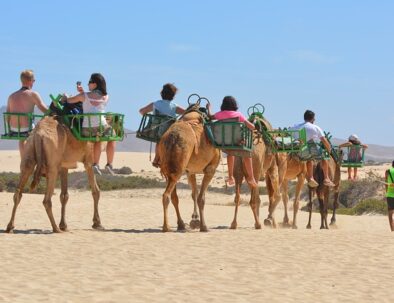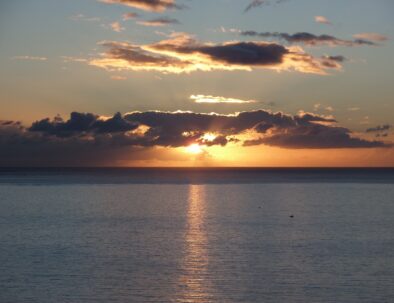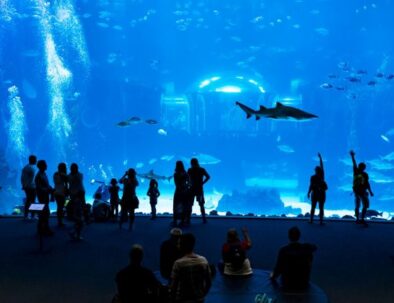
Camel Ride Maspalomas Dunes
A camel Ride Maspalomas is one of the best, and most entertaining ways to explore the Dunes of Maspalomas on the Island of Gran Canarias. … Read More
A unique, affordable and fantastic experience you can and should experience
Whale watching in Gran Canaria a unique and fantastic experience you can and should experience while visiting the Island. Joining a whale and dolphin watching tour or excursion in Gran Canaria is one of the best activities to enjoy in the island.
The Canary Islands in general are one of the best places on the planet for whale watching. The geomorphological and oceanographic features of Gran Canaria, make it a hotspot for cetaceans. The warm and cold waters surrounding the island, and the huge amount of food available to these underwater mammals attracts them like a magnet to the area.
Of the 79 species of cetaceans known worldwide, over 30 have been sighted off the coast of Gran Canaria. That is over 30% of the world’s diversity.
Excellent reviews and great value for money for these tours to enjoy these amazing mamals in Gran Canaria
Don’t forget sun and lip protection (for the breeze and the sun)
If you have a tendency to get dizzy, make sure to take medication to avoid seasickness.
Make sure you wear comfortable clothes and to have something warm to put on with you because it can get chilly out on the water.
Make sure to have some sunglasses with you.
Pack a camera but hang on tight to it, because you wouldn’t be the first guest to lose your camera or phone off the side of the boat.
Some tours are conducted on a glass-bottom boat so you can have an easier time spotting the different dolphins and whales common to the area. Depending on the circumstances this does not help much though and some people may suffer from sea sickness
Departure port is important but also bear in mind that some tours offer pick up in areas like Playa del Ingles, Maspalomas, Meloneras, San Agustin, and Mogan, so you don’t have to worry about getting yourself to the dock. Most boats leave from Port Rico on the southwest coast of the island. This is the best slice of coast to find dolphins and whales.
Crewin most tours are well versed in the different species that are commonly found off the coast of Gran Canaria. It is common for dolphins to jump alongside the boat which is always a treat.
Tour duration. Tours typically lasts 2- 3 hours. Longer tours also includes a stop for a swim.
Pricing of whale watching tours in Gran Canaria is affordable especially for tours with larger vessels. Special discounts for children apply sometimes
Similar to whale watching in Tenerife, whale watching in Gran Canaria is unlike whale watching anywhere else in the world.
The Canary Islands are located in an interesting little slice of the Atlantic Ocean. In this spot, the waters can reach great depths, and it is where the cold waters of the Atlantic and the warm waters of the Mediterranean sea converge. This makes the waters off the coast of the islands an excellent environment for all types of fish and plankton, in other words, whale and dolphin food. All sorts of whales and dolphins, therefore swarm around the islands looking for an easy meal.
Now, the best way to get up close with these aquatic mammals is, of course, going on a whale-watching boat trip. Simple right? Well, not so much. There are literally hundreds of different whale-watching tours available on Gran Canaria. Some are good, some are great, and others a flat-out terrible. Sifting through all these tours to find the best ones can be near impossible. But, have no fear, our local expert guides have done the leg work for you and have selected the top whale watching tour you can book on the island of Gran Canaria. Check it out!
You also get whales that come through the islands on their way to somewhere else. Such is the case of Killer Whales or Orcas that pass through the Canary Islands on their way to the Mediterranean Sea as they chase one of their favorite prey: Tuna.
But many of the whale species you can see near the island of Gran Canaria are resident, which makes sighting whales a breeze. Canary waters are among the areas with the highest whale and dolphin concentrations in Europe. So it is almost guaranteed that you will spot dolphins or whales on a boat trip in Gran Canaria.
There are several that set out from Puerto Rico every morning. Whether you are traveling with kids, other couples or seniors, a whale watching tour is a great experience for everyone.
The richness of the seabed of the Canary Islands, the crystal clear water, and the warm temperatures (that average 19º C in winter and 25º C in summer), attract many marine animals. The great advantage of the archipelago compared to other places is that many of these animals live there permanently.
This means that up to thirty different species can be found in the Canary Islands, including the elusive blue whale, as well as many dolphins species. Its presence is so common that the islands have become the most important place in Europe for whale and dolphin watching.
Being able to enjoy these animals and contemplate them in total freedom in their natural habitat is a truly unforgettable experience.
These are the common species that can be found off the coast of the island.
In the Canary Islands you can observe up to six different species of these aquatic mammals, considered one of the most intelligent animals on the planet.
Seeing dolphins in the sea at dawn, from boats or even from some points on the coast, has become very common for the islanders.
It is very common to find the largest type of dolphin (yes it is actually a dolphin despite the name) in the Canary Islands because it is where it lives permanently.
This extremely friendly animal always travels in a group or pod, interacting and playing with the other members. Their high level of sociability is the reason these animals commonly will approach boats.
This is actually a family of whales. In fact, it is the most diverse and varied family of mysticetes, including the humpback whale, one of the regular residents of the Canary Islands, which can measure up to 16 meters in length.
Due to their peculiar shape, they are easily recognizable. In addition to their beard, they have a very characteristic hump that differentiates them from other cetaceans.
ts.
The sperm whale, which can measure up to 20 meters in length, is one of the largest mammals in the world. Although in the Canary Islands it is possible to find them, their sighting is not as common because they tend to remain submerged for the majority of their life. Sperm whales can actually hold their breath for up o 90 minutes, which is one of the longest among whales. When looking for food, their dives can last 35 minutes and reach 33 kilometers in deepth.
The short answer is that there is no best time of year in Gran Canaria to see dolphins or whales. It doesn’t matter when you go, you will always get to come in contact with these creatures. Now, if you are looking for specific types of whales, it can get trickier.
We have already talked about this in a previous article on whale watching in Spain, but it bears repeating.
Sperm whales are a rare sight anywhere in the world but they do pop up from time to time in the Canary Islands in Spring, as they chase giant squid. Spotted dolphins can be seen from autumn to early summer and common dolphins can be found only during the winter months.
Humpback whales also visit during the summer on their way to their breeding grounds in the Cape Verde Islands. One of the most elusive species, the blue whale, has also been seen near the Islands in winter but it is one of the rarest whales to find.
The most common dolphin species in Gran Canaria are the bottlenose dolphins and the Borneo dolphin. They all live permanently in the waters around the Canary archipelago and in large groups.
These lively and highly intelligent critters are generally open-minded and quite sociable. Therefore, it is not uncommon for them to approach boats and interact with visitors.
They absolutely love surfing the bow wave, showing off with jumps and other acrobatic maneuvers, you can even hear them calling to one another if you listen closely.
If you set out on a dolphin tour from Puerto Rico look for the boats that carry the seal “Barco Azul”, in English “Blue Boat”. This means that the operator has the appropriate license to perform the whales and dolphins search trips and that he adheres strictly to the legal provisions to ensure the protection of these marine mammals in Canary waters.
The set rules imply, among other things, that the boats can only approach the animals at a certain distance and can neither distress nor persecute them.
Approach and interaction can only happen if they are initiated by the animals themselves. It is also strictly forbidden to feed them, nor are you allowed to swim with them.
These rules are in place to ensure that these marine animals can move freely in their own habitat and live in absolute freedom.
During the excursion, the crew will inform you of the different species of cetaceans that are seen and of the features and particularities of each one of them.

A camel Ride Maspalomas is one of the best, and most entertaining ways to explore the Dunes of Maspalomas on the Island of Gran Canarias. … Read More

Playa del Ingles is one of the best and most spectacular beaches in Gran Canaria. Check out our full guide to get the most out of your visit. … Read More

Poema del Mar Aquarium is a spectacular aquarium located in the Puerto de la Luz of Las Palmas. It’s a wonderful aquarium and great place to visit. … Read More
is proudly powered by WordPress